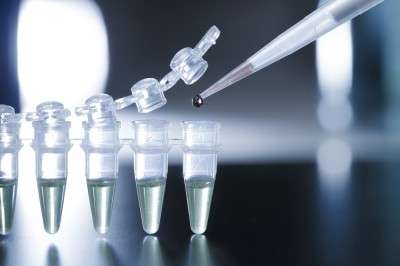Mapping a route to stem cell therapies

Monash University researchers are shedding light on the complex processes that underpin the creation and differentiation of stem cells, bringing closer the promise of 'miracle' therapies.
Dr Jose Polo of the Australian Regenerative Medicine Institute (ARMI) and the Department of Anatomy and Developmental Biology and his team, with collaborators at Harvard, have comprehensively mapped, for the first time, the process by which mature cells are re-programmed to become an induced pluripotent stem (iPS) cell.
iPS cells behave almost exactly like embryonic stem cells - they can become any cell in the body - but come without the ethical and scientific pitfalls.
The re-programming process was developed in 2006; however, until now, it was unknown exactly how it worked.
Dr Polo has unravelled the precise molecular events occurring in an adult skin cells at almost every level throughout the re-programming process. The results were published in the prestigious journal Cell.
Every cell in the body contains a full genome or complete set of DNA. The differences between a brain neuron and a liver cell are down to the fact that although they contain the exact same genes, not all of these are active in each cell - a process known as transcription.
Proteins called transcription factors control which genes are active or inactive by changing the availability of the genes to be transcribed. This in turn mediates the differentiation of stem cells to all the different types of cells in the body. It is the reversal of this complex process - returning an adult cell to its pluripotent state - that the researchers mapped.
"Once you understand a process, you can manipulate it," Dr Polo said.
"Now that we have created a roadmap for re-programming, we can do a lot of things. We can look at improving the efficiency of re-programming and investigating if some of the potential dangers can be avoided by re-routing the process."
Now, Dr Polo's team is investigating whether re-programming follows an identical path for all types of cells. They are also looking at the potentially cancer-causing mutations in iPS cells and ways to circumvent this tumorific potential.
Another project is examining "memory" in iPS cells and its implications.
"For example, if I create an iPS cell from a blood cell and an iPS cell from a muscle cell, the two are a little different - they carry memories of where they were generated. Now I'm examining ways to exploit these memories," Dr Polo said.
Dr Polo said these and many more complexities must be understood before stem cell therapy can move effectively into the clinical arena.
"Modern medicine has achieved wonderful things, but doctors are like mechanics trying to fix a car without access to spare parts," Dr Polo said.
"The promise of stem cells is amazing - it will almost bring us into a new age of medicine - but there's a lot more work to do before this promise can be realised."
Journal information: Cell
Provided by Monash University














